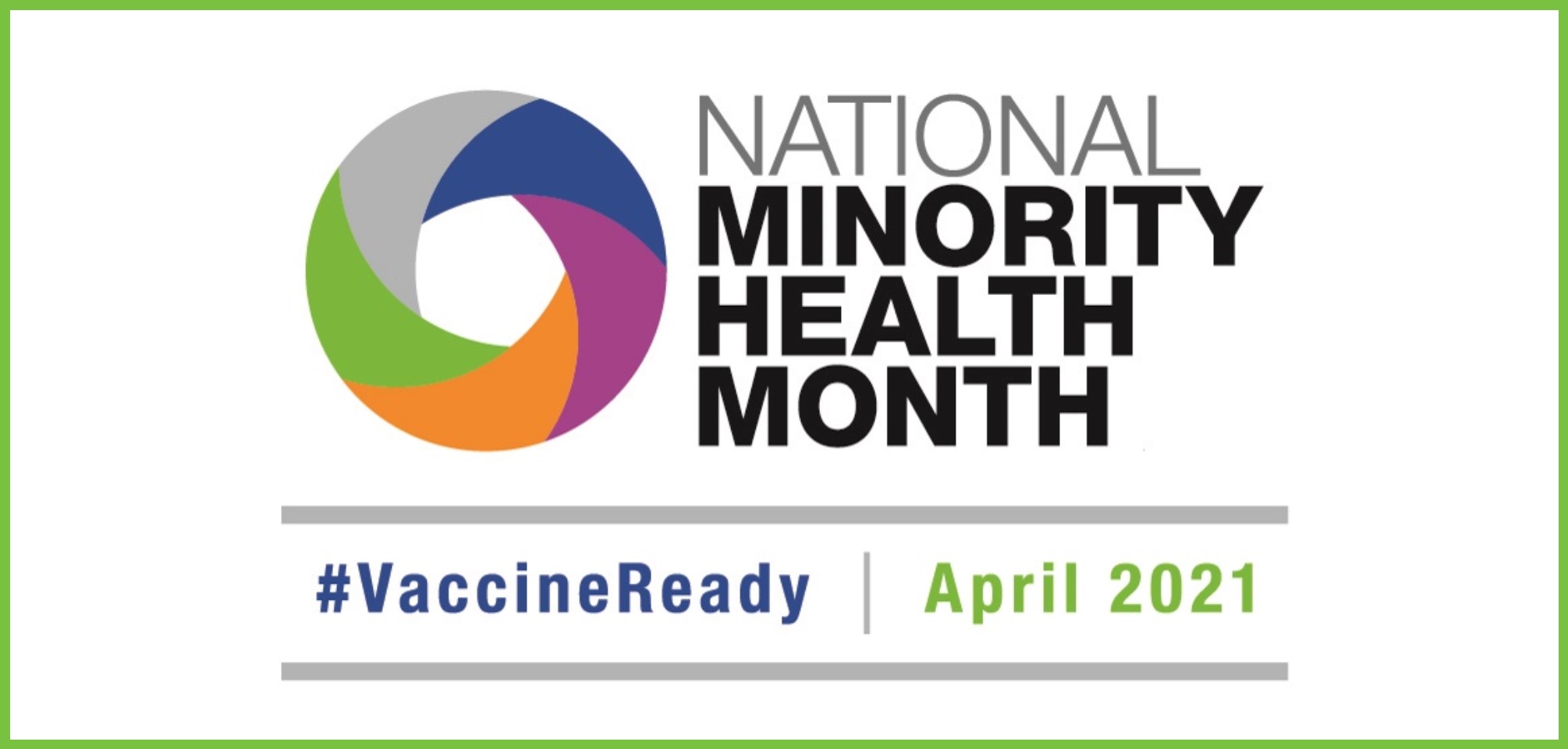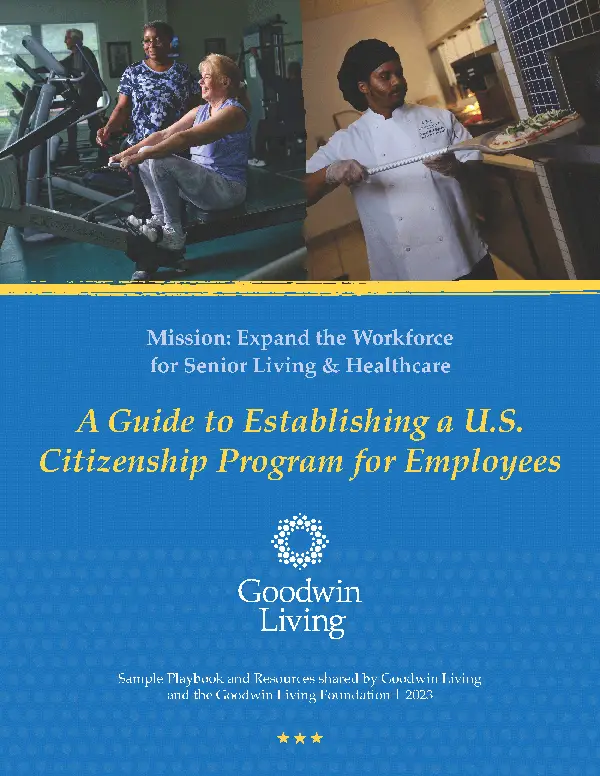
Diversity Equality Inclusion - April 30, 2021
By Amber McCracken
At Goodwin Living, we care about the health of everyone who is part of our organizational family – residents, staff, members and those receiving specialized care from our health care services. We are also dedicated to ensuring everyone can have access to adequate health care.
In recognition of National Minority Health Month, we explore the hard facts of current day disparities, as well as some of the history that has led us to them.
Editor’s note: Some readers may find portions of this article difficult to read. We share factual statistics that illustrate current disparities. We then explore the causes for some of these disparities, which are rooted in the history of mistreatment of Black Americans, from slavery to Tuskegee.
The COVID-19 pandemic has certainly taught us many positive lessons about patience, enjoying the smaller joys in life and appreciating our loved ones. We heard stories of people taking care of their elderly neighbors, teachers going above and beyond for their homebound students and cities coming together to cheer nightly for their frontline workers. Yet, everything we learned about each other and our country wasn’t always heroic.
COVID-19 shined a very unflattering spotlight onto some of the darker corners of our country; revealing a healthcare system in which people of color suffer disproportionately from disease.
Health officials found early on that minority communities were among the hardest hit in the pandemic, suffering a disproportionate amount of deaths and complications from the virus. For instance, African Americans had 2.7 times the odds of hospitalization for COVID-19 as their non-Hispanic white counterparts. What’s more, a higher proportion of Black patients were transferred to the intensive care unit than non-Hispanic white patients.
The gaps in health and wellness along racial lines that pre-dated the pandemic, born out of multiple causes, mean that minorities entered the pandemic with greater health risks.
With communities of color among the hardest hit by the pandemic, one might surmise that the COVID vaccine options were well received by these populations. Instead, they record much lower rates of vaccination than white non-Hispanic.
As of April 28, 2021, the majority of patients who have received at least 1 dose of a COVID-19 vaccine are White (63%); only 12% are Hispanic, 8.7% are Black, 5.7% are Asian, 1.1% are American Indian or Alaska Native, and <1% are Native Hawaiian or Other Pacific Islander.
There are many reasons for vaccine hesitancy in minority populations, including misinformation about vaccine efficacy and safety, lack of trust in the government and pharmaceutical companies, fear of deportation among undocumented immigrants, as well as inaccessible vaccination sites in underserved communities. However, to truly understand the underlying medical mistrust of today, one has to look back to where it began.
One population that has demonstrated a higher resistance to receiving the vaccine has been African Americans. Sadly, there exists a long legacy of medically discriminating and exploiting Black Americans, the indelible memory of which remains deeply embedded in the collective consciousness of the community. Research has shown that Blacks are much less likely to report trust in their physicians and hospitals; thus, are less likely to seek treatment or be compliant with guidelines such as vaccine recommendation.
From the beginning of slavery, there were white physicians who played a key role in the abuse and mistreatment of black bodies. This piece of American history has been explored in depth by historians such as Todd Savitt, whose article “The Use of Blacks for Medical Experimentation and Demonstration in the Old South” appeared in The Journal of Southern History (a publication of Rice University) in 1982.
Enslaved people were medically neglected and abused with enslavers deciding when and if healthcare was given. When enslaved people were too old or sick for monetary gain, their enslavers would sell them to physicians for use in experiments. Some physicians propagated flawed theories that Black patients had different diseases, disease susceptibilities and medical outcomes than whites. Doctors often used these ideas to provide scientific justifications for slavery and black inferiority.
Consider Dr. Samuel Adolphus Cartwright. He was the most prominent physician, surgeon and medical scientist in antebellum Mississippi. In 1846, Dr. Cartwright was elected as first president of the Mississippi State Medical Society, turning his focus on writings based on pro-southern, pro-slavery and black inferiority theories. He stressed that Blacks and whites were physiologically and structurally different, thus requiring different medical treatments. Cartwright also suggested Black enslaved people were mentally incapable of functioning without a white master.
This belief that Black bodies were different extended well into the Reconstruction Era.
According to Harriet Washington’s book Medical Apartheid, as the concept of teaching hospitals evolved in the nineteenth century, medical students were expected to experience specialized teaching, including gaining knowledge by experimenting on Black bodies. In fact, having access to Black bodies, enslaved and free, was used as a marketing tool to attract students to attend medical schools and teaching programs throughout the south.
This experimentation became more difficult after the abolition of slavery, because Black people were not permitted to receive inpatient care at hospitals with wealthy whites.
As a result, many hospitals established “Charity Wards” to house experimental subjects, which mainly included Blacks and poor whites. In exchange for payment of medical services rendered, patients on the Charity Ward would agree to be subjects of experimentation and teaching material. According to Washington, in many cases, patients were unknowingly agreeing to have life-saving medical treatment withheld from them so students could observe disease progression.
Until the 1960s, many hospitals would not admit Black patients or hire Black medical staff. According to Nathaniel Wesley Jr.’s book, “Black Hospitals in America: History, Contributions and Demise,” about 500 hospitals were exclusively owned or operated by Black doctors who primarily served Black patients in their communities during the height of the country’s segregated past. Today, Howard University Hospital, previously the Freedman’s hospital, remains the only Black-owned and operated hospital in the country.
In 1932, the U.S. Public Health Service commissioned its study of syphilis in the “Untreated Negro Male.” Once again, poor Black men were promised free healthcare to allow white doctors to use their black bodies for experimentation.
Syphilis was pervasive in Macon County, Alabama, with Black men being infected at alarming rates. The U.S. government promised free treatment to approximately 600 impoverished Black men living with syphilis. In reality, the syphilis study’s design was to collect data on the progression of untreated syphilis in “negro males.”
After these men died, autopsies were performed to document disease progression and organ system involvement. The underlying theory put forward by the white doctors who were responsible for these experiments was that syphilis behaved differently in white men than in Blacks. Syphilis was thought to affect the brain and neurologic system in whites, while the disease was thought to primarily affect the cardiovascular system in Blacks because their brains were smaller, less well developed than white men’s, and therefore the infection would spare the neurologic system including the brain.
On May 16, 1997, President Bill Clinton issued a formal apology for the unconscionable and unethical treatment of the participants in the study.
The traumatic effects from the horrific abuse of the Black community by our healthcare establishment still linger and are a major factor for the distrust felt by Black Americans today.
Generations have heard this well-documented history of maltreatment, including the high-profile story of Henrietta Lacks, who had her cancer cells taken from her body without her knowledge and used to form the HeLa cell line. This history, combined with current statistics that reveal the marginalization of communities of color by our healthcare system, helps to illustrate the low rate of participation in the national vaccination effort.
The problem of systemic racism in our healthcare system is deep-seated and complex. The solution isn’t a quick fix, which is problematic when the vaccine seems to be in a race against time to halt the virus in its tracks.
When Dr. Reed Tuckson, co-founder of the Black Coalition Against Covid and former health commissioner of Washington, D.C., was asked how to address this mistrust, he commented “They want to know and have real reasons for trust. They want to know that the process is going to be fair, that they are not being guinea pigs to a system that is rigged against them.”
At Goodwin Living, we recognized the potential concerns around the COVID-19 vaccines. We sought to build understanding, dialogue and support. We also relied on research that showed participants in the clinical trials were racially diverse, and that the protections offered by the vaccines held for people of different ethnicities, races and ages.
We are deeply grateful to our residents and staff (who represent more than 60 countries) for helping us achieve vaccination levels at nearly 100% for residents and more than 94% for staff.
_______________
Amber McCracken is the executive director of Current Communications, a boutique consultancy that helps organizations with their marketing and public relations activities. Amber has worked with GHI since 2014, providing her expert advice to support Goodwin Living At Home. She contributes regularly to The Good Life, both as a writer and editor. Amber lives in North Carolina with her husband and two children.
